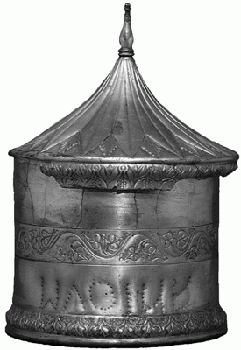American Journal of Archaeology | The Journal of the Archaeological Institute of America
You are here
A Third-Century B.C.E. Etruscan Tomb Group from Bolsena in the Metropolitan Museum of Art
July 2008 (112.3)
A Third-Century B.C.E. Etruscan Tomb Group from Bolsena in the Metropolitan Museum of Art
This paper examines an alleged tomb group acquired in 1903 by the Metropolitan Museum of Art in New York. Many of the 45 objects are of high quality and made of valuable materials. Several of the most elegant are probably imports from Greek cities in southern Italy. Two of the silver objects, a strigil and an amphoriskos, are delicately punched with monograms that likely identify the owner and occupant of the tomb as Ramtha Murinas. This article makes a case for this identification, which in turn leads to the specific necropolis at Bolsena (Poggio Sala), where this tomb may have been discovered in the 19th century. An important feature of the tomb group appears in the use of special inscriptions designating 10 objects as śuthina, or “for the tomb.” This unusual practice is examined in the second half of the paper.
A Third-Century B.C.E. Etruscan Tomb Group from Bolsena in the Metropolitan Museum of Art
By Richard De Puma
American Journal of Archaeology Vol. 112, No. 3 (July 2008), pp. 429–440
DOI: 10.3764/aja.112.3.429
© 2008 Archaeological Institute of America


